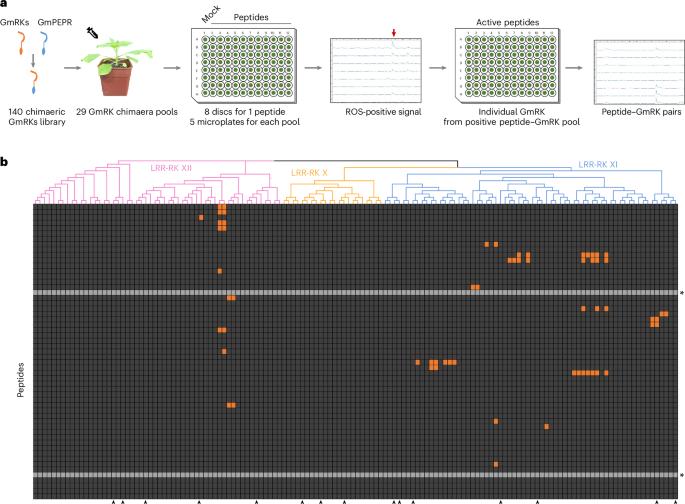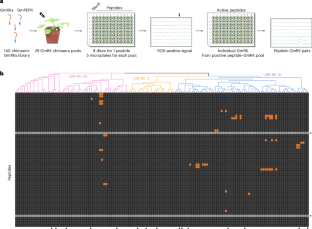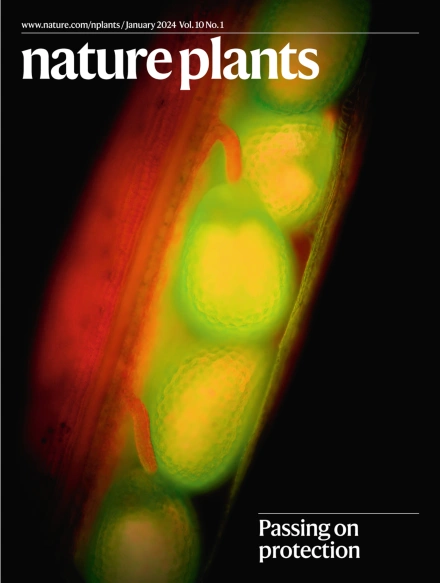Large-scale pairing identifies a soybean phytocytokine-receptor module conferring disease resistance
IF 13.6
1区 生物学
Q1 PLANT SCIENCES
引用次数: 0
Abstract
Plant peptide hormones play essential roles in various physiological processes, including activating defence responses to biotic stress. Membrane-localized pattern recognition receptors (PRRs) typically detect peptide hormones to initiate signalling pathways. Through comprehensive peptide–receptor matching, we identified 63 peptide–receptor pairs in soybeans. Among these, the immunomodulatory phytocytokines GmPEP914 and GmPEP890 trigger robust immune responses that suppress a broad spectrum of pathogen infections, mediated by their identified receptors GmPEP914 and GmPEP890 RECEPTOR1 (GmP98R1) and GmP98R2. Biochemical assays combined with AI-based structural modelling demonstrated that both peptides directly bind GmP98Rs with nanomolar affinity, driven primarily by interactions between the receptors and the C-terminal residue of the peptides. The PEP914-P98R module is conserved across Fabales and Cucurbitales, underscoring its evolutionary importance. Collectively, our study establishes a scalable pipeline for systematic peptide–receptor discovery and elucidates the pivotal role of the PEP914-P98R module in soybean disease resistance. The authors establish a scalable pipeline for systematic peptide–receptor discovery. Applying this approach in soybean, researchers identified a PEP914/890-P98R module that plays a pivotal role in conferring disease resistance.


大规模配对鉴定大豆植物细胞因子受体模块赋予抗病性。
植物肽激素在多种生理过程中发挥重要作用,包括激活对生物胁迫的防御反应。膜定位模式识别受体(PRRs)通常检测肽激素启动信号通路。通过全面的肽受体配对,鉴定出大豆中63对肽受体。其中,免疫调节植物细胞因子GmPEP914和GmPEP890触发强大的免疫应答,抑制广谱的病原体感染,由其鉴定的受体GmPEP914和GmPEP890受体1 (GmP98R1)和GmP98R2介导。生化分析结合基于人工智能的结构建模表明,这两种肽主要由受体和肽c端残基之间的相互作用驱动,以纳米摩尔亲和力直接结合GmP98Rs。PEP914-P98R模块在Fabales和Cucurbitales中是保守的,强调了它的进化重要性。总的来说,我们的研究为系统的肽受体发现建立了一个可扩展的管道,并阐明了PEP914-P98R模块在大豆抗病中的关键作用。
本文章由计算机程序翻译,如有差异,请以英文原文为准。
求助全文
约1分钟内获得全文
求助全文
来源期刊

Nature Plants
PLANT SCIENCES-
CiteScore
25.30
自引率
2.20%
发文量
196
期刊介绍:
Nature Plants is an online-only, monthly journal publishing the best research on plants — from their evolution, development, metabolism and environmental interactions to their societal significance.
 求助内容:
求助内容: 应助结果提醒方式:
应助结果提醒方式:


